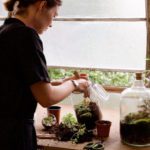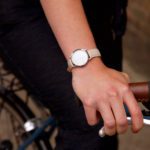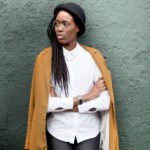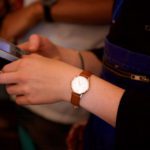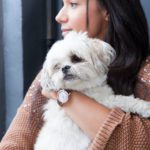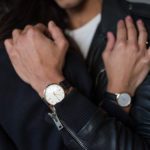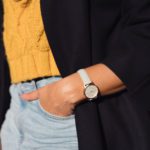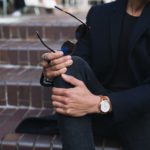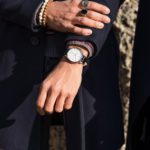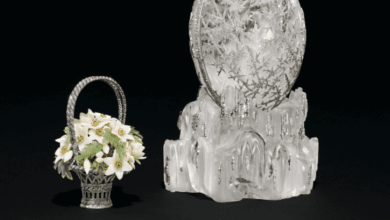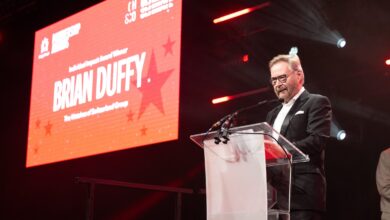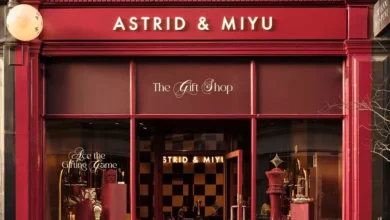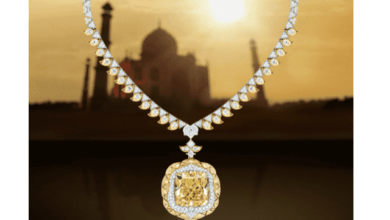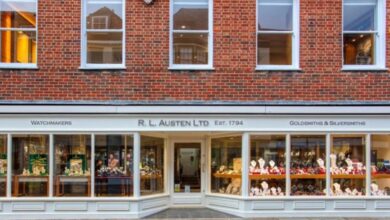Brand Profile – Freedom to Exist
Freedom to Exist timepieces were born from a desire to move away from the noise of branding and technology and focus on a more stylish and minimal design. Co-founded by the creative director for Soho House and the head of furniture for M&S, ALESSANDRO CARRARA sat with owner Paul Tanner to find out more about about his innovative watch brand
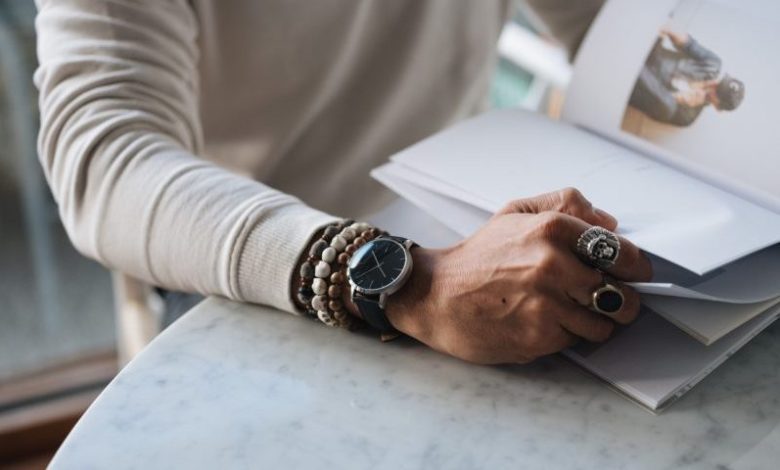
Register to get 1 free article
Reveal the article below by registering for our email newsletter.
Want unlimited access? View Plans
Already have an account? Sign in
Tell me how you started your watch brand?
Around five years ago Kirsty and I met working for Habitat, and then we both joined Made.com and moved to China. I think the experience of working at successful startup made us really want to do our own thing.
Since we had only ever worked in furniture we knew that our biggest issue, from a Made.com point of view, was shipping a large box around the world. It’s the logistics of it all that gets you, and nowadays customers expect free delivery, free returns and assume they have the item no matter where your brand is located.
We were brainstorming a few different ideas and one weekend when we came back to the UK I was trying to buy Kirsty a present, who had her heart set on a watch. We were in Liberty and we tried on a few and none of them would fit her and we also felt that some of the branding was a bit over the top. There was another customer who was also trying to buy a watch and she couldn’t get one that could fit either. So we thought if Kirsty can’t find a watch that she wants, and if other customers were in the same position, then maybe there was an opportunity for us.
So we both made use of our design skills and Kirsty designed the first watch herself and then I did some research and managed to find a really good supplier and we prototyped it and launched the brand in 2015. It was definitely a whirlwind process, since watches and jewellery were not our specialist area. But we had a passion for design and a passion for creating something new. What also helped was that we had ties with shops like SCP, 2021 and the Barbican from our retail days and fortunately for us they stocked us straightaway. So when we first launched we were already in some big, high profile design brands, pretty much within our first few weeks.
Tell me about the range of watches you have on offer?
We started with a 33mm face as our debut watch. We use a Ronda 963 quartz movement and Italian leather. To keep things minimal we put our logo on the back of the watch, because when you look at lot of other watches all you really see is the logo. We felt that the whole Freedom to Exist concept was born out of the fact that we wanted a beautifully designed product that didn’t have branding screaming at you. With products like the Apple watch if you don’t do enough steps it beeps at you, if you get a text message your wrist vibrates. So I thought: “What is the antidote to that? What would the non Apple watch wearer wear?” I didn’t need to be reading text messages covertly in meetings, I just wanted a watch that could move away from that.
We turned to Kickstarter and launched a campaign at the end of 2015 and were funded £25,000, which we used to buy our first orders, which were the 30mm face and 40mm face. We also recently added a mesh option because we had lots of requests for it. This is something we hadn’t really anticipated, as we thought different colours would be more attractive but it seems that people want to have a bit of a diverse watch collection rather than variations of the same.
The biggest achievement we have had so far is being on the tube recently and seeing a couple of people wearing our watches – something we would like to see more of.
What were the difficulties in starting the brand?
I think it was brand awareness. We were lucky that platforms like Instagram were around, but we were just on the cusp where you had to start paying for everything. Making things go viral now without a big budget is difficult, and there is a lot of competition, especially with watches all of a sudden. I think because of platforms like Kickstarter lots of people have attempted to make watches. So it’s become quite a competitive field, but I think we found a bit of a niche for ourselves because of our price point.
This has allowed us to attract a certain type of customer, such as architects, illustrators and carpenters. People who have a skill and work with their hands. We are a lot less mainstream but we have focused on a niche audience at this early stage, which is the best thing we can do at the moment to capture a small customer base.
Tell me about your previous jobs?
Kirsty’s background is in design and mine is about manufacturing and production and our previous roles focused on making a sketch and then taking that to mass production. Kirsty would doodle on a piece of paper, and draw it up on a computer and find a factory. Up until four or five years ago we had only ever done that with furniture, but now we use those exact same skills for watches.
So you’ve been able to bring those previous skills to your watch brand?
It definitely gave us the necessary skills, because I think that some of watches I have seen come out in previous years have obviously just been made in a factory. But for us we have designed every facet of the watch, the front view, the side view, the back of the watch and even the box it comes in. We have even designed the website ourselves. Our watches are unique in that regard, and we feel there isn’t anything else really like it. With other brands it’s always a similar watch with a different logo.
What was the biggest change going from retail to watches?
When we were at Made.com we spent three years just working on the UK market, and when we launched the watches our first customer was in London and our second one was based in Australia. It was something we hadn’t really factored in. But what helped was that we knew we had a small item and we knew we could ship it globally.
Do you have a showroom?
No, at the moment we are still online only, but we have done a few pop-ups. The Design Museum did a Christmas sale last year and we have also done a few trade shows. I think we might look at hiring a space in the new year. There is a website called ‘Appear Here’, which is a bit like Airbnb for shops, so we might rent a space for a long weekend or a period of time.
Do you design all of your watches?
Yes. Kirsty designs the whole thing. She starts off on pen and paper and then will flesh it out in Illustrator and AutoCAD, and then she will liaise with the supplier, who will then create the prototype. Kirsty designed the mechanism and then she created the watch around those specifications.
What has the response been to your watches?
It’s been really positive. Because we used Kickstarter a lot of our friends and family supported us and then became investors as well. Me and Kirsty were at a wedding recently and six people around the same table had a Freedom to Exist watch on, which was unexpected, since it was just a mutual friend.
We have also had a couple of people on TV buy our watches. Comedian Rob Beckett is one example. We were watching the Jonathan Ross show last weekend and he was on there wearing one of our watches. It’s a funny sensation of how something that you did in your spare time is being worn on TV being watched by millions of people.
Do you employ any staff?
No it’s just me and Kirsty and we do everything ourselves. Photography and branding is all Kirsty and the website is all down to me. Between the two of us we have the skillset to run the brand. People often think we have a team but it really is just the two of us. Even packaging and sending items to customers is handled by us! I’ll prepare the box and envelopes and Kirsty will write the little thank you notes.
Do you think the workload is quite tough with it being just the two of you?
It’s not been too bad. Because we only sell online people are buying products 24 hours a day, and what that means is that at a certain point every few days we dedicate time to printing off labels and shipping it all. Sometimes we will get back from work and stay up until midnight preparing everything or get up early and do it.
Because we aren’t in a shop we can manage our own time, and as long as we dedicate the right amount of time for dispatching that’s the only real thing we have to adhere to. We are really keen on customers getting their watches as soon possible.
Would you ever consider employing an apprentice or a trainee?
Definitely! Kirsty and I both got into design by being interns and through work experience people. So once we get a bit bigger and maybe get a showroom space we can work from we would definitely be keen to get people involved. It’s all about passing it onto the next generation and being at a startup is a great environment to gain knowledge and experience. It would definitely be good to pass on those skills that we have both learned.
What is your favourite aspect of your job?
I really enjoy the e-commerce side of things. Since at places like M&S if you wanted to change the colour of a button on the website it might take up to a year for it to be implemented, since you have to go to a committee and take it up with them. With our website if we have an idea, read something or get a recommendation we can do it that day. The thing I like the most is that immediacy.
What is your plan for the next five years?
More designs! We need to give more choice, which is something we hadn’t really anticipated at the beginning. It’s really important that customers can come back, since we do have a lot of customers returning to us for different straps and materials. To have a range of designs and a diverse range of price points is definitely one of our goals. Eventually having our own studio space and team is something we also want to do.




